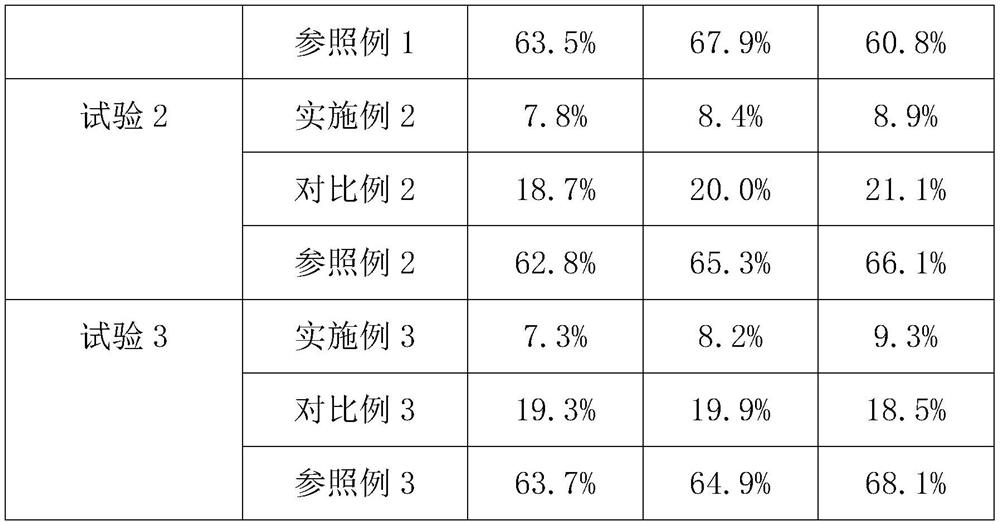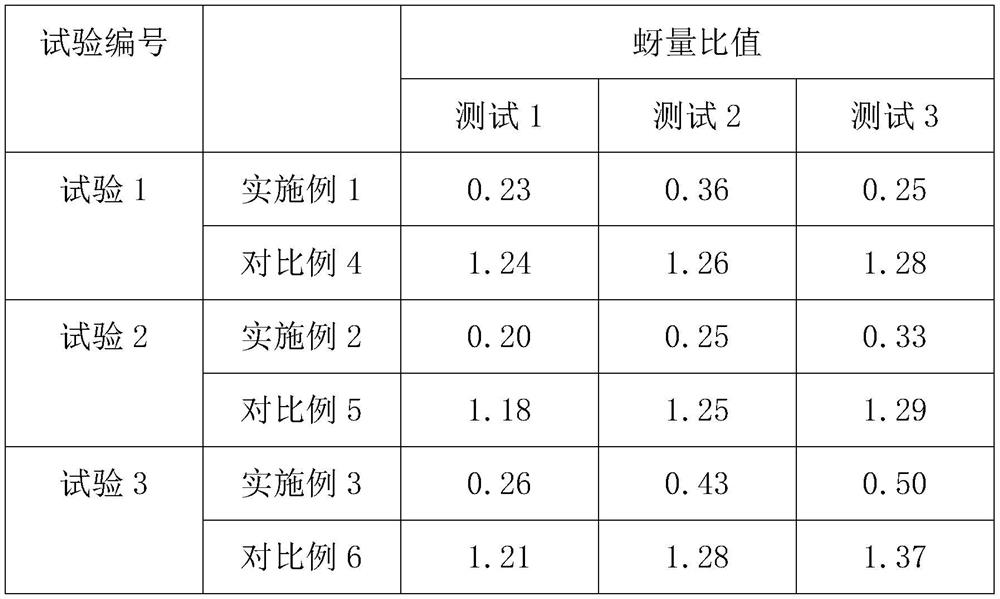Disease and pest resistant lily breeding method
A technology against pests and lilies, applied in the fields of botanical equipment and methods, seed immunization, chemicals for biological control, etc., can solve problems such as browning and rot of fleshy roots and disc bases, peeling scales, and the appearance of aphids, To achieve the effect of improving the preventive effect
- Summary
- Abstract
- Description
- Claims
- Application Information
AI Technical Summary
Problems solved by technology
Method used
Image
Examples
Embodiment 1
[0020] S1. Prepare antibacterial solution:
[0021] a: Weigh 130 parts by mass of Eupatorium adenophorum powder, add 30 parts by mass of ethanol solution with a concentration of 70%, heat and extract in a water bath until the liquid is colorless, then add 7 parts by mass of activated carbon, filter, and evaporate the filtrate Concentrate, collect into a volumetric flask, add 20 parts by mass of absolute ethanol, and finally add 10 parts by mass of salicylic acid and mix to obtain the Eupatoria adenophorum extract;
[0022] b: Pour the extract of Eupatorium adenophorum into another volumetric flask, add an equal amount of biogas slurry and mix completely, and after standing still, the antibacterial solution is obtained, which is ready for use;
[0023] S2, preparation of attractant solution: Weigh 5 parts by mass of benzaldehyde, 5 parts by mass of hexanal, 1 part by mass of nerol and 1 part by mass of trans-2-hexen-1-ol, and mix them Pour them into containers one by one, stir...
Embodiment 2
[0028] S1. Prepare antibacterial solution:
[0029] a: Weigh 140 parts by mass of Eupatorium adenophorum powder, add 33 parts by mass of ethanol solution with a concentration of 70%, heat and extract in a water bath until the liquid is colorless, then add 10 parts by mass of activated carbon, filter, and evaporate the filtrate Concentrate, collect into a volumetric flask, add 23 parts by mass of absolute ethanol, and finally add 13 parts by mass of salicylic acid and mix to obtain Eupatorium adenophorum extract;
[0030] b: Pour the extract of Eupatorium adenophorum into another volumetric flask, add an equal amount of biogas slurry and mix completely, and after standing still, the antibacterial solution is obtained, which is ready for use;
[0031] S2. Preparation of attractant solution: Weigh 7 parts by mass of benzaldehyde, 7 parts by mass of hexanal, 2 parts by mass of nerolidol and 2 parts by mass of trans-2-hexen-1-ol, and mix them Pour them into containers one by one, ...
Embodiment 3
[0036] S1. Prepare antibacterial solution:
[0037] a: Weigh 150 parts by mass of Eupatorium adenophorum powder, add 35 parts by mass of ethanol solution with a concentration of 70%, heat and extract in a water bath until the liquid is colorless, then add 13 parts by mass of activated carbon, filter, and evaporate the filtrate Concentrate, collect into a volumetric flask, add 26 parts by mass of absolute ethanol, and finally add 15 parts by mass of salicylic acid and mix to obtain Eupatorium adenophorum extract;
[0038] b: Pour the extract of Eupatorium adenophorum into another volumetric flask, add an equal amount of biogas slurry and mix completely, and after standing still, the antibacterial solution is obtained, which is ready for use;
[0039] S2. Preparation of attractant solution: Weigh 9 parts by mass of benzaldehyde, 9 parts by mass of hexanal, 3 parts by mass of nerolidol and 3 parts by mass of trans-2-hexen-1-ol, and mix them Pour them into containers one by one, ...
PUM
 Login to View More
Login to View More Abstract
Description
Claims
Application Information
 Login to View More
Login to View More - R&D
- Intellectual Property
- Life Sciences
- Materials
- Tech Scout
- Unparalleled Data Quality
- Higher Quality Content
- 60% Fewer Hallucinations
Browse by: Latest US Patents, China's latest patents, Technical Efficacy Thesaurus, Application Domain, Technology Topic, Popular Technical Reports.
© 2025 PatSnap. All rights reserved.Legal|Privacy policy|Modern Slavery Act Transparency Statement|Sitemap|About US| Contact US: help@patsnap.com



